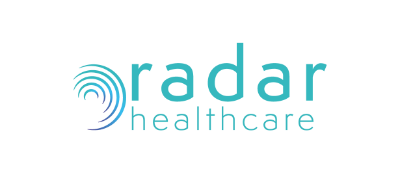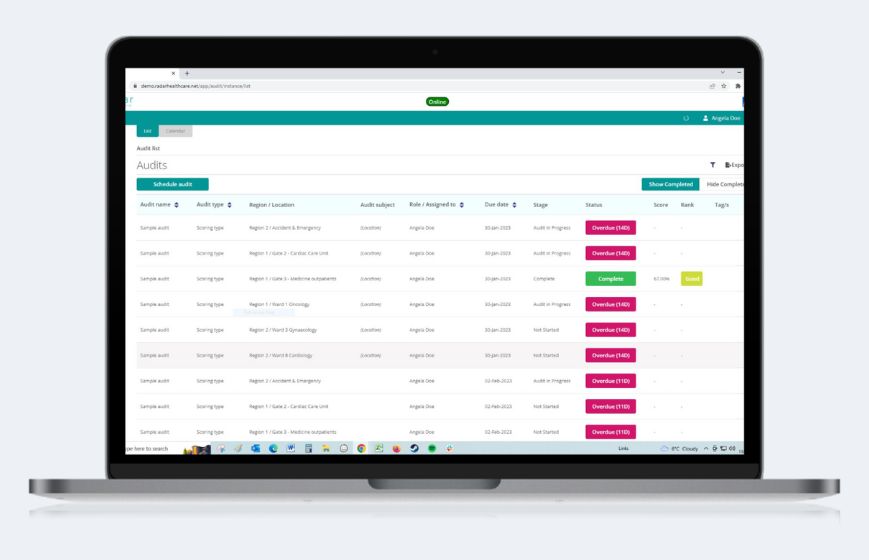The changing face of Primary Care – what will become ‘the new normal’?
28 April 2020
In the last few weeks, we have seen rapid digital transformation in primary care, enabling general practice to deliver new models of care at a pace we have never seen before. To get an insight into how the current COVID-19 crisis is impacting GPs, patients and the wider primary care landscape, we spoke to award-winning GP and PCN Clinical Director, Dr Farzana Hussain.
Can you provide an overview of your experience in the last few weeks?
If you had asked me a few months ago to make a 2020 plan for our surgery which didn’t include a building or a receptionist, I’d say you’re mad! But it’s happened, it’s happening.
With social distancing measures in place and an NHS England directive to move to a total triage system, we’ve had to very quickly move to remote consultations; and we’re now in a position where under 5% of appointments are carried out face to face. The CCG has been great, purchasing laptops to facilitate remote working and they are continuing to deliver resources to support this.
The last few weeks have not been without challenges, but the digital tools we have in place have enabled us to focus on continuity of care. The reality is that if we had a patient in the building who later turned out to be COVID-19 positive, we would need to close our site for a deep clean so remote consultations have been essential to mitigate that risk.
Although the Coronavirus crisis is upsetting for us all and has caused national and international challenges, the pace of digital transformation that it has spurred is quite exciting. It shows the reality of how agile practices are; making changes that we thought would take years in just three weeks.
And what is the operational reality of these changes?
Our surgery’s model is:
- Online consultation first – if you want to contact one of our GPs, we will ask you to fill in an online consultation form although if you are elderly, vulnerable or have a disability, you can bypass the form. We’re making good use of these forms in a large number of cases and it is actually a very short consultation process compared to our 10-minute face-to-face model.
- Telephone consultation – if we can’t resolve the patient’s query through the online triage form.
- Video consultation – if we need see something to triage or make a diagnosis.
- Face-to-face consultation – only if absolutely necessary, mainly where I need to physically touch a patient to establish what’s wrong i.e. if they had acute abdomen pain.
This way of working has definitely opened up capacity – we’re now able to accommodate around 100 online consultations per day although we don’t always reach that level. The move to online triage first has delivered a lot of efficiencies for both patients and clinicians which is amazing for a small surgery like ours.
I think in the first couple of weeks, there was a fear that we would be overrun with consultation requests but we haven’t seen that so far. In fact, we’re probably dealing with around 50 online consultations per day so have capacity to do more.
What data are you using to support strategic and operational decision-making during this period?
We’re only a few weeks in so we’re only just starting to establish our data points and trends, but we closely monitor quantitative data in terms of number of online consultations, volume of phone calls and our ability to react to them etc.
But we also need to closely monitor the data around quality for example, appropriate prescribing and repeat consultations for the same problem. There are lots of positives about remote consultations, but there hasn’t really been enough time yet to evaluate whether patient outcomes have improved, or at least remain consistent with face-to-face consultations. We need to be very careful that we mitigate the risk of something being missed and data is the key to understanding this so we can act accordingly.
And how have the changes affected patient engagement?
I must congratulate the patients – they have been incredibly helpful and surprisingly comfortable discussing and even showing intimate areas like breast and genitals during a video consultation. Although we do know that some patients are scared about engaging with any healthcare setting at the moment and/or might not feel digitally competent enough to have a remote consultation – so we need to make sure these people don’t fall through the gaps.
Before the current crisis, there was often the feeling that patients had been ‘short changed’ with a remote consultation. I would often get the response that “digital is impersonal and you remove the human factor” but I’m having lots of positive remote consultations which has proven the human connection can still happen through digital.
So, when we talk about the NHS being slow to adapt to change and make the most of digital, there was always going to be a cultural change required within the population to support digital transformation and it just so happens that this current crisis has forced the nation to embrace this new model of care at the same time as the tech being made available!
As a GP, what are the key benefits to this new way of working?
Remote consultations certainly provide a lot more flexibility as our workload isn’t always time-bound. I can plan my day much more effectively, so I am definitely enjoying this new way of working. Patients have added to this flexibility – the online consultation mechanisms give them the ability to specify a desired time for a consult and most say they are free anytime.
The obvious benefit to us is minimising our exposure to the patient population – most patients came to the realisation quickly that we are likely to be more infective to them than they are to us and so have been happy with the remote consultation process.
From a personal point of view, I have been acutely aware of my own leadership style throughout this crisis. I’m used to listening to everybody’s views, taking them all on board and making collaborative decisions but we haven’t had time for that. I was nervous about taking a more dictatorial approach to the situation, but some strong, pragmatic decision-making was needed, and I think the rest of the Primary Care Network I lead appreciated that.
This situation has also taken me back to why I wanted to be a doctor – being able to appreciate the basic humanity of delivering care that doesn’t always result in writing a prescription. A high-risk patient who I’ve known for a long time called the surgery and said “I have a mild cough, do you think I’ll be alright?”. He was worried, and I tried to reassure him, even offering to drop some shopping off for him on my way home so he didn’t have to go out. I think my voice must have faltered a bit because the realisation suddenly hit that some of my patients will die from this. In that moment, the balance of the relationship changed , and the patient replied “you are an angel, I’m gonna get through this, I’m gonna get better for you” – thankfully, he did contact the surgery to say he was fine but this really brings home the reality of community spirit and the fact that we are all in this together.
How do you anticipate the current situation will affect the development of Primary Care Networks (PCNs)?
Coronavirus has already expedited the relationships and collaborations within PCNs. Having launched last July, we were still considering how to develop PCNs over the five-year period – I use the analogy that we would all get engaged, get married and we’d live happily ever after. Suddenly, that’s it… we’re married, living together and kids in tow – there was no dating, no romantic dinners and there certainly hasn’t been a honeymoon period! Relationship-wise within the PCNs, I think people are a bit overwhelmed. What would naturally have taken five years, we are going to compress into just a year so I have no doubt we have some challenging times ahead.
Despite that, I think this crisis will show how strong PCNs can be. We have broken down cross-organisational boundaries like never before and have created wonderful support networks that will ensure our collective patients are cared for even if clinicians fall ill.
Operationally, we’re a large PCN (with seven practices and 66,000 patients), but we quite quickly mobilised the workforce to deliver remote consultations albeit primarily via telephone (which is still a huge transformation for some) – not everyone has embraced online consultations as much as our practice. Despite some differences in digital maturity, and an initial panic about how many laptops we needed, we’ve worked well together as a network to pool resources and evaluate the digital infrastructure needs for each practice – I think this bodes well for the future.
How do you see the relationship between primary and secondary care progressing as we move out of the current situation?
That’s the bit I’d like to do a bit more work on, to build relationships and have a more holistic view of the care our patients are receiving in other settings so that we can contribute to their health and wellbeing…
Now we are operationalised to work remotely, there is a huge opportunity to have much more direct contact with consultants and be present (via video) at relevant outpatient appointments so that we can ensure continuity of care. Through a more joined up care system and a level of shared responsibility for patients, we could reduce a lot of waste in the system and dramatically reduce both acute admissions and outpatient appointments.
What are your key learnings from the last few weeks?
- There’s a time for collaborative leadership and there’s a time for crisis leadership; good leaders need to have the emotional intelligence to understand “what do others need from me?”.
- We’re all in this together, we’re all human and we need to work as a community to support each other – I’m relying heavily on my friends and family for emotional support because I need to be strong leader when I’m at work.
- Quality improvement is essential, even in a crisis. Plan, Do, Study, Act is even more critical when you’re moving at pace and scale. There has to be freedom to fail but not if that failure has happened because we haven’t learnt from our previous mistakes.







